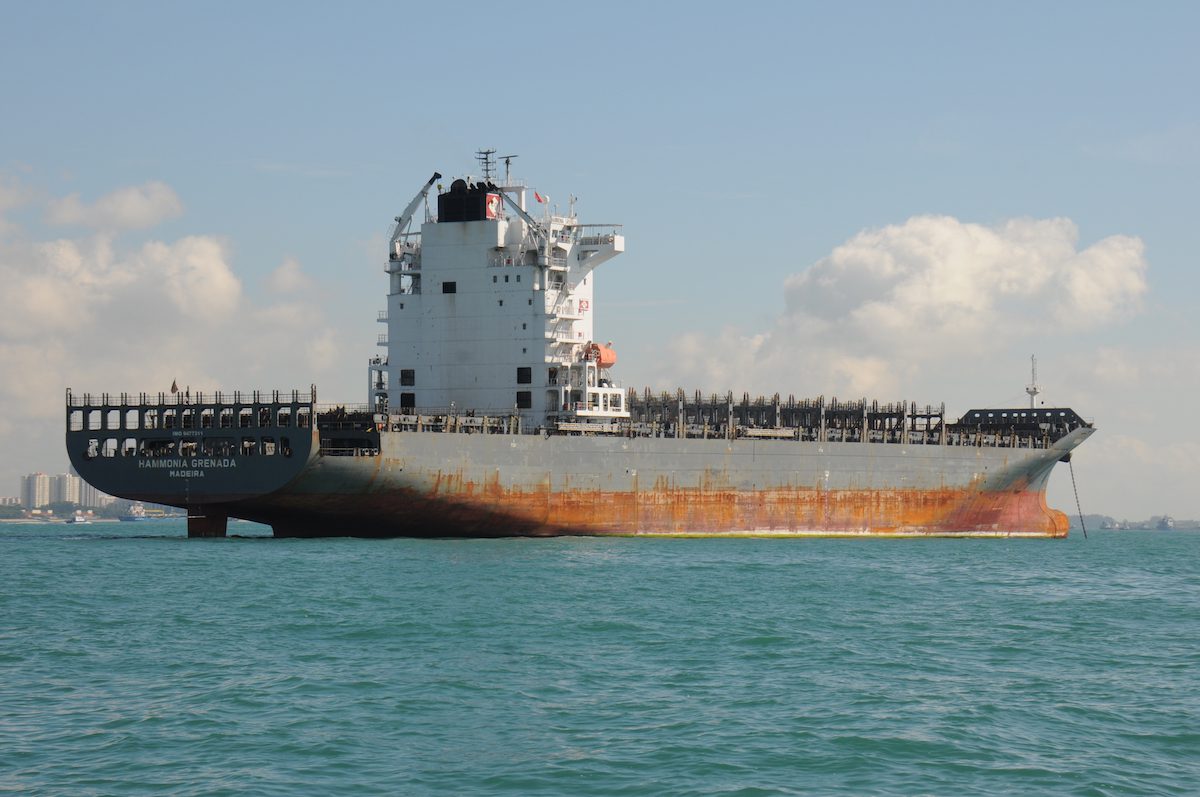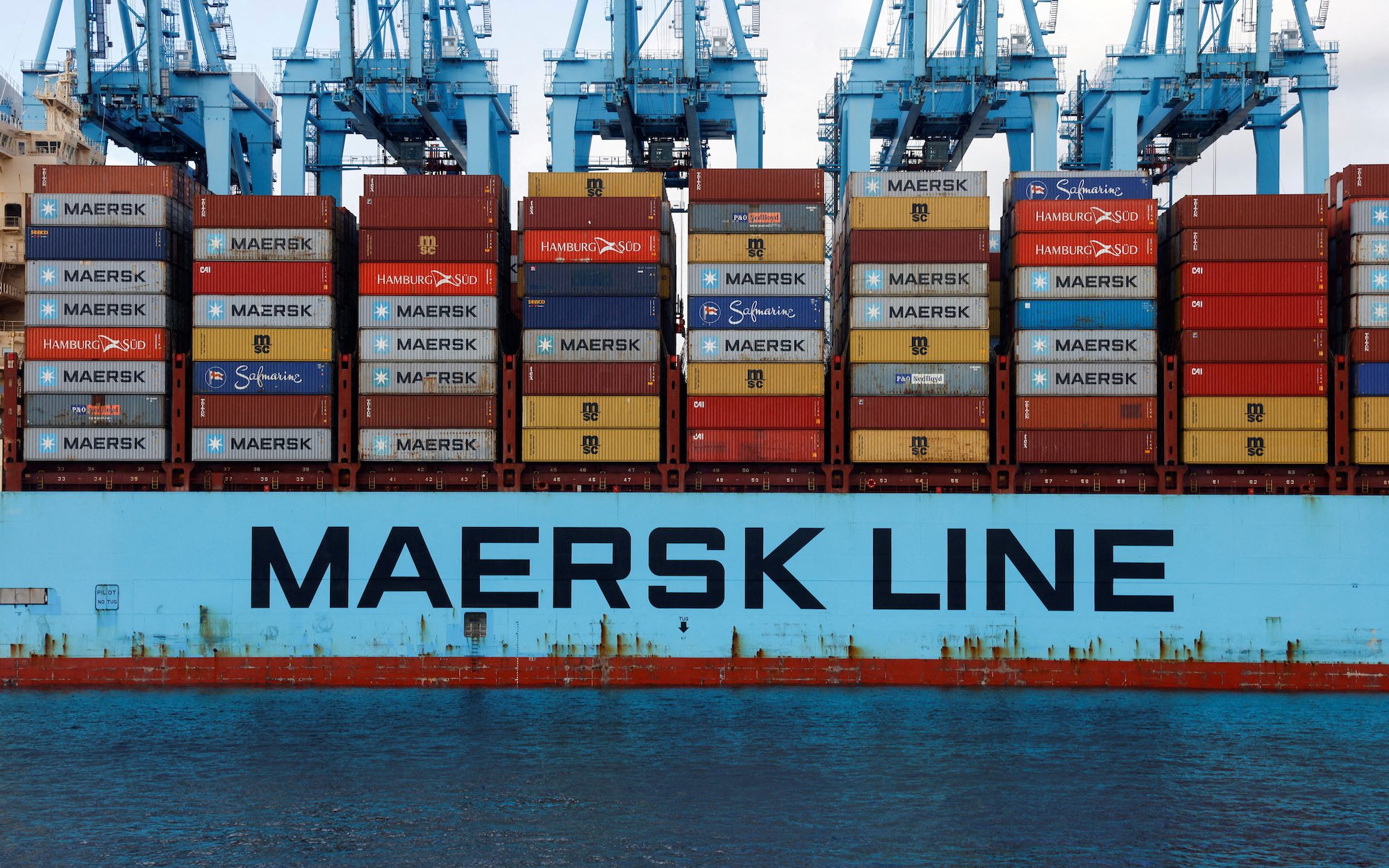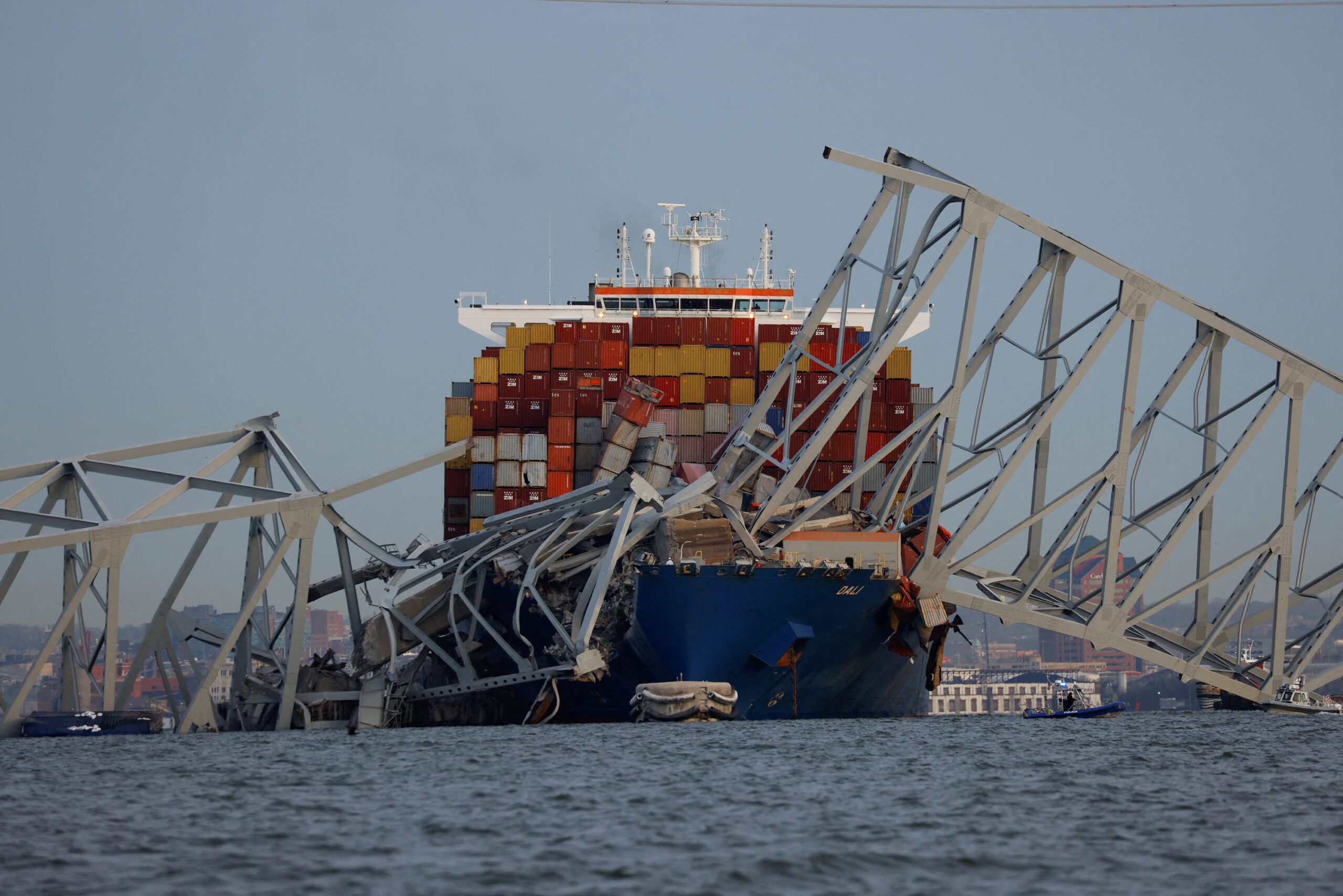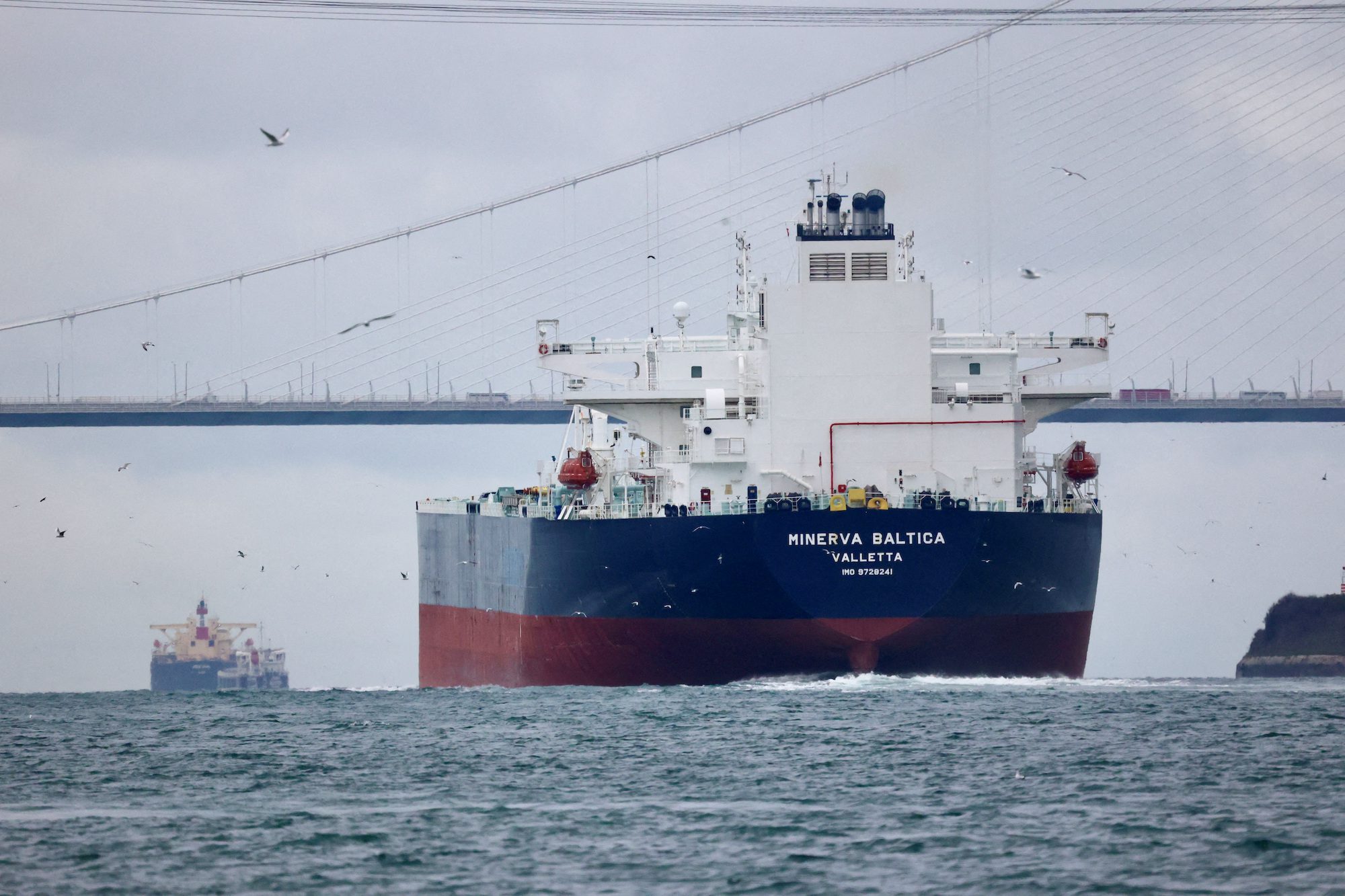The 2010-built MV Hammonia Grenada, which Rickmers sold for scrap in January, at a Singapore anchorage, January 11, 2016.
By Mike Wackett
(The Loadstar) – Beleaguered panamax containership owner Rickmers Maritime Trust (RMT) has pleaded with its creditors for help to restructure its debts.
Singapore-headquartered RMT posted a full-year 2016 net loss of $180m, after charter revenue of just $69m, and continues to carry an enormous debt pile.
It operates a fleet of 15 containerships of 3,450-5,060 teu, five of which are on long-term charter to MOL, five operate on the spot market and the remaining five are in lay-up.
According to vesselsvalue.com the live and demolition value of the RMT fleet has sunk to around $83m, compared with its mortgage and loan note debt of approximately $300m.
In a statement today RMT said it “remained in active talks” with lenders “to restructure the borrowings”.
Chief financial officer Tomas Norton de Matos said: “Securing a restructuring plan at the earliest is imperative to Rickmers Maritime’s solvency, and remains our key focus.”
He added: “While it is understandably painful for creditors to write off material portions of debts, not doing so would limit recoveries as proceeds from distressed sales and liquidation are likely to be unsatisfactory.”
RMT has been obliged to sell ships for scrap to help cover the operating costs of its remaining fleet. The seven-year-old 4,250 teu India Rickmers went in December for a reported $5.6m – a $31.6m impairment hit in its 2016 accounts. The India Rickmers has the dubious honour of being the youngest non-casualty containership to be dispatched to the scrapyard.
And this month, RMT agreed the sale of the 2004-built 5,060 teu Kaethe C Rickmers to a Bangladeshi yard for a reported $6.7m, which will trigger a massive impairment loss in this year’s accounts.
Other than scrap sales, RMT is sourcing operating cash flow from long-term fixed-rate charters with MOL. Indeed, in 2016, 70.7% of its revenue came from the Japanese carrier. As of December, RMT had secure revenue – backed by charter party – of $84.9m, mainly from the long-term charters to MOL.
MOL is paying a daily hire rate of $26,850, with the charters expiring between mid-2018 and early 2019. This compares with the current market rate for these vessel types of between $4,250 and $5,000 per day.
However, even at these very depressed rates, employment for panamax ships would be virtually impossible on the open market. According to Alphaliner data, 57 such vessels are seeking employment around the world.
Notwithstanding the high price MOL is paying for the charters, the carrier must also have concerns about the ships being arrested should RMT be pushed into receivership.
RMT has pledged that if it ceases to be a going concern, it would wind up the company “in an orderly manner to preserve current time charters”.
With its portfolio of virtually unemployable ships and a charter market blighted by chronic overcapacity, its survival prospects appear increasingly bleak.
The Loadstar is fast becoming known at the highest levels of logistics and supply chain management as one of the best sources of influential analysis and commentary.
Check them out at TheLoadstar.co.uk, or find them on Facebook and Twitter.
Unlock Exclusive Insights Today!
Join the gCaptain Club for curated content, insider opinions, and vibrant community discussions.

 Join The Club
Join The Club













